I have a 2D numpy array, and I want a function operating on col1 and col2 of the array, If 'M' is the number of unique values from col1 and 'N' is the number of unique values from col2, then the output 1D array will have size (M * N) For example, suppose there are 3 unique values in col1: A1, A2 and A3 and 2 unique values in col2: X1 and X2. Then, the possible combinations are:(A1 X1),(A1 X2),(A2 X1),(A2 X2),(A3 X1),(A3 X2). Now I want to find out how many times each combination occurs together in the same row, i.e how many rows are there that contain the combination (A1,X1) and so on.. I want to return the count as a 1D array. This is my code :
import numpy as np
#@profile
def myfunc(arr1,arr2):
unique_arr1 = np.unique(arr1)
unique_arr2 = np.unique(arr2)
pdt = len(unique_arr1)*len(unique_arr2)
count = np.zeros(pdt).astype(int)
## getting the number of possible combinations and storing them in arr1_n and arr2_n
if ((len(unique_arr2)>0) and (len(unique_arr1)>0)):
arr1_n = unique_arr1.repeat(len(unique_arr2))
arr2_n = np.tile(unique_arr2,len(unique_arr1))
## Finding the number of times a particular combination has occured
for i in np.arange(0,pdt):
pos1 = np.where(arr1==arr1_n[i])[0]
pos2 = np.where(arr2==arr2_n[i])[0]
count[i] = len(np.intersect1d(pos1,pos2))
return count
np.random.seed(1)
myarr = np.random.randint(20,size=(80000,4))
a = myfunc(myarr[:,1],myarr[:,2])
The following is the profiling results when i run line_profiler on this code.
Timer unit: 1e-06 s
Total time: 18.1849 s File: testcode3.py Function: myfunc at line 2
Line # Hits Time Per Hit % Time Line Contents
2 @profile
3 def myfunc(arr1,arr2):
4 1 74549.0 74549.0 0.4 unique_arr1 = np.unique(arr1)
5 1 72970.0 72970.0 0.4 unique_arr2 = np.unique(arr2)
6 1 9.0 9.0 0.0 pdt = len(unique_arr1)*len(unique_arr2)
7 1 48.0 48.0 0.0 count = np.zeros(pdt).astype(int)
8
9 1 5.0 5.0 0.0 if ((len(unique_arr2)>0) and (len(unique_arr1)>0)):
10 1 16.0 16.0 0.0 arr1_n = unique_arr1.repeat(len(unique_arr2))
11 1 105.0 105.0 0.0 arr2_n = np.tile(unique_arr2,len(unique_arr1))
12 401 5200.0 13.0 0.0 for i in np.arange(0,pdt):
13 400 6870931.0 17177.3 37.8 pos1 = np.where(arr1==arr1_n[i])[0]
14 400 6844999.0 17112.5 37.6 pos2 = np.where(arr2==arr2_n[i])[0]
15 400 4316035.0 10790.1 23.7 count[i] = len(np.intersect1d(pos1,pos2))
16 1 4.0 4.0 0.0 return count
As you can see, np.where and np.intersect1D take up a lot of time. Can anyone suggest faster methods to do this? In future I will have to work with real data much larger than this one, hence I need to optimize this code.

